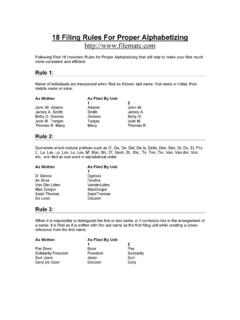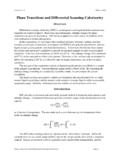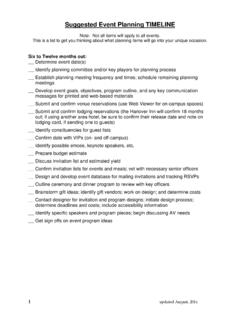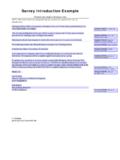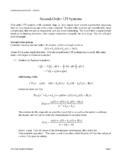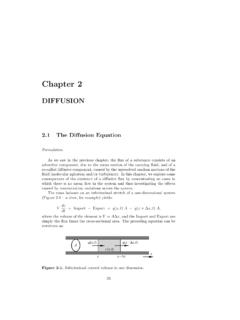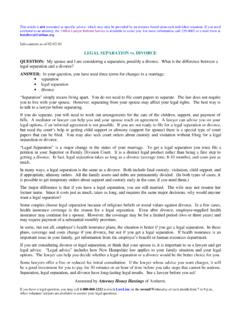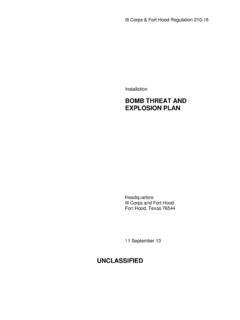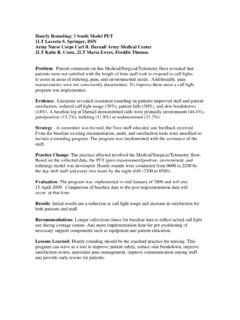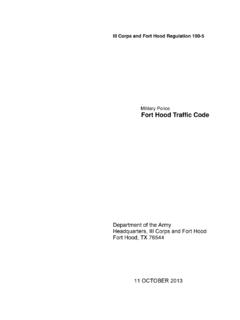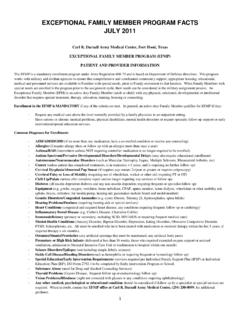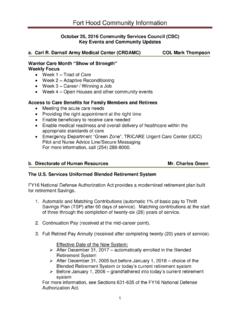Transcription of Psychometric Analysis of the PTSD Checklist-5 (PCL-5 ...
1 Psychometric Analysis of the PTSD Checklist-5 (PCL-5) AmongTreatment- seeking military Service MembersJennifer H. Wortmann and Alexander H. JordanVA Boston Healthcare System, Jamaica Plain, Massachusetts,and Boston University School of MedicineFrank W. WeathersAuburn UniversityPatricia A. ResickDuke University Medical CenterKatherine A. Dondanville and Brittany Hall-ClarkThe University of Texas Health Science Center at San AntonioEdna B. FoaUniversity of PennsylvaniaStacey Young-McCaughanThe University of Texas Health Science Center at San AntonioJeffrey S.
2 YarvisCarl R. Darnall army Medical Center, Fort Hood, TexasElizabeth A. HembreeUniversity of PennsylvaniaJim MintzThe University of Texas Health Science Center at San AntonioAlan L. PetersonThe University of Texas Health Science Center at San Antonioand South Texas Veterans Health Care System,San Antonio, TexasBrett T. LitzVA Boston Healthcare System, Jamaica Plain, Massachusetts,and Boston University School of MedicineOn behalf of the STRONG STAR ConsortiumThe Posttraumatic Stress Disorder Checklist (PCL-5;Weathers et al., 2013) was recently revised toreflect the changed diagnostic criteria for posttraumatic stress disorder (PTSD) in the fifth edition of theDiagnostic and Statistical Manual of Mental Disorders(DSM 5;American Psychiatric Association,2013).
3 We investigated the Psychometric properties of PCL-5 scores in a large cohort (N 912) ofThis article was published Online First January 11, H. Wortmann and Alexander H. Jordan, Massachusetts Veter-ans Epidemiology Research and Information Center, VA Boston Health-care System, Jamaica Plain, Massachusetts, and Department of Psychiatry,Boston University School of Medicine; Frank W. Weathers, Department ofPsychology, Auburn University; Patricia A. Resick, Department of Psy-chiatry and Behavioral Sciences, Duke University Medical Center; Kath-erine A. Dondanville and Brittany Hall-Clark, Department of Psychiatry,The University of Texas Health Science Center at San Antonio; Edna , Department of Psychiatry, Perelman School of Medicine, Universityof Pennsylvania; Stacey Young-McCaughan, Department of Psychiatry,The University of Texas Health Science Center at San Antonio; Jeffrey , Department of Behavioral Health, carl R.
4 Darnall army MedicalCenter, Fort Hood, Texas; Elizabeth A. Hembree, Department of Psychi-atry, Perelman School of Medicine, University of Pennsylvania; Jim Mintz,Department of Psychiatry and Department of Epidemiology & Biostatis-tics, The University of Texas Health Science Center at San Antonio; AlanL. Peterson, Department of Psychiatry, The University of Texas HealthScience Center at San Antonio, and Office of Research and Development,South Texas Veterans Health Care System, San Antonio, Texas; Brett , Massachusetts Veterans Epidemiology Research and InformationCenter, VA Boston Healthcare System, and Department of Psychiatry,Boston University School of Medicine; on behalf of the STRONG material is the result of work supported with resources and the useof facilities at the VA Boston Healthcare System and South Texas VeteransHealth Care System.
5 The views expressed in this article are solely those ofthe authors and do not reflect an endorsement by or the official policy ofthe army , the Department of Defense, the Department of VeteransAffairs, or the Government. Dr. Foa receives royalties from the saleofProlonged Exposure Therapy for PTSD: Emotional Processing of Trau-matic Experiences Therapist GuideandReclaiming Your Life From aTraumatic Experience Workbookby Oxford University Press (New York,NY). Dr. Foa also receives payment for training she conducts on prolongedexposure therapy. Funding for this work was made possible by the of Defense through the army Medical Research andMateriel Command, Congressionally Directed Medical Research Pro-grams, Psychological Health and Traumatic Brain Injury Research Pro-gram awards W81 XWH-08-02-109 (Alan Peterson), W81 XWH-08-02-0111 (Edna Foa), W81 XWH-08-02-0114 (Brett Litz), and W81 XWH-08-02-0116 (Patricia Resick).
6 We thank Robert A. Lew, PhD, for hisconsultation on the clinical change concerning this article should be addressed to Jennifer , VA Boston Healthcare System, 150 South Huntington Avenue(151-MAV), Boston, MA 02130. AssessmentIn the public domain2016, Vol. 28, No. 11, 1392 1403 service members seeking PTSD treatment while stationed in garrison. We examined the internalconsistency, convergent and discriminant validity, andDSM 5factor structure of PCL-5 scores, theirsensitivity to clinical change relative to PTSD Symptom Scale Interview (PSS-I;Foa, Riggs, Dancu, &Rothbaum, 1993) scores, and their diagnostic utility for predicting a PTSD diagnosis based on variousmeasures and scoring rules.
7 PCL-5 scores exhibited high internal consistency. There was strongagreement between the order of hypothesized and observed correlations among PCL-5 and criterionmeasure scores. The best-fitting structural model was a 7-factor hybrid model (Armour et al., 2015),which demonstrated closer fit than all other models evaluated, including theDSM 5model. The PCL-5 ssensitivity to clinical change, pre- to posttreatment, was comparable with that of the PSS-I. Optimallyefficient cut scores for predicting PTSD diagnosis were consistent with prior research with servicemembers (Hoge, Riviere, Wilk, Herrell, & Weathers, 2014).
8 The results indicate that the PCL-5 is apsychometrically sound measure ofDSM 5 PTSD symptoms that is useful for identifying provisionalPTSD diagnostic status, quantifying PTSD symptom severity, and detecting clinical change over time inPTSD symptoms among service members seeking :PTSD, PCL-5, military , psychometricsSupplemental materials: fifth edition of theDiagnostic and Statistical Manual ofMental Disorders(DSM 5;American Psychiatric Association,2013) brought major changes to the criteria for posttraumatic stressdisorder (PTSD). PTSD was moved from the anxiety disorderscategory to a new class of trauma- and stressor-related disorders, and Criterion A2 (peritraumatic fear, helplessness, or horror) waseliminated.
9 The three symptom clusters in the fourth edition of theDSM(DSM IV;American Psychiatric Association, 1994) wereexpanded into four by splitting the avoidance and numbing clusterinto anavoidancecluster and anegative alterations in cognitionsand moodcluster. Three new symptoms were introduced (persis-tent and distorted blame of self or others, persistent negativeemotional state, and reckless or self-destructive behavior), andseveral others were revised. Also, a dissociative PTSD subtypewas added, as was a requirement that symptoms not be attributableto medications, substance use, or other interviews and self-report instruments for assessingPTSD have been revised to align with theDSM 5changes, and thepsychometric characteristics of these new tests need to be evalu-ated (Weathers, Marx, Friedman, & Schnurr, 2014).
10 One of themost widely used self-report questionnaires, especially in militaryand veteran contexts, is theDSM IV-based PTSD Checklist (PCL;Weathers, Litz, Herman, Huska, & Keane, 1993). In this report, wedescribe the Psychometric properties of the PCL forDSM 5 (PCL-5 ;Weathers et al., 2013, available ) in a cohort of service members seeking treatment fordeployment-related PTSD. Our use of a treatment - seeking militarysample makes the results especially germane to researchers andclinicians studying and treating service members and new evaluations of PCL-5 scores to date have foundthem to have high internal consistency in samples of war veterans(.)

